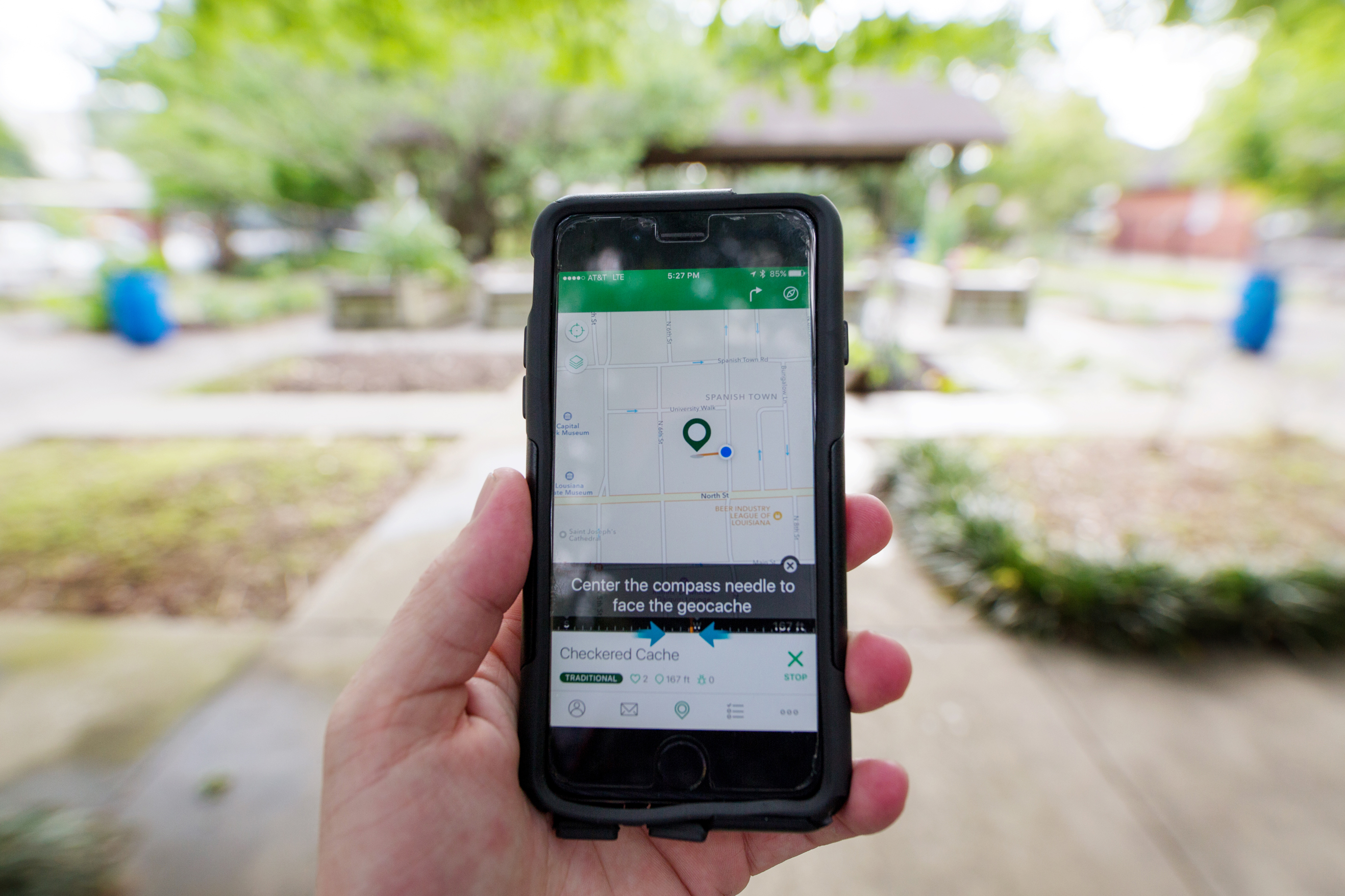
Thanks to Baton Rouge’s geocachers, there are hidden treasures all over the city
You can find them nearby in urban parks, deep in a patch of woods on the outskirts of town or even scattered across LSU’s campus. Just about anywhere around Baton Rouge, there’s a geocache to be found.
“You’ll even find them in the Walmart parking lot,” says Prairieville geocaching enthusiast Riann Weishaupt, who’s been caching almost five years.
Weishaupt has more than 1,000 finds under her belt from dozens of states, as well as Canada. Caches are small containers in which participants who find them leave their marks—by leaving a trinket for the next person who finds the cache or by signing a logbook rolled up inside.
|
|
What is geocaching?
An outdoor activity where participants use GPS coordinates to find hidden containers. Geocaches can be located anywhere in the world.
Weishaupt says geocaching is easy for novices, who can use a free smartphone app and GPS coordinates to find caches nearby. She also suggests joining the Louisiana Geocaching Organization on Facebook to get acquainted with members who can show you the ropes.
Baton Rouge’s community parks are hotspots for geocaching, including Forest Community Park and Hartley/Vey Park, says BREC Outdoor Adventure program coordinator Amanda Bradley. Those looking for more of an adventure can try the more densely wooded Frenchtown and Blackwater conservation areas, as well as Bluebonnet Swamp.
1,932
Number of caches located in or near Baton Rouge as of press time, according to geocaching.com.
In urban locations, items as small as film canisters might be taped to the underside of benches or the backs of street signs. In wooded areas, the caches might be in larger containers.
Finds inside the containers can include virtually anything, from fake gold coins to flashlights. It’s caching custom that if you take an item from the cache, you leave something in return, Weishaupt says.
But for many cachers like Weishaupt, it’s not about the prize so much as it is about the puzzle of finding a cache.
“It’s also about getting out and exploring the world we live in,” she says. “It’s a chance to get away from the TVs and video games. And for families, it’s a chance to spend time together and have fun.” geocaching.com

A geocacher’s tips
Riann Weishaupt shares the insights she’s gained in five years of geocaching
1. Beginners, take it easy. There are varying types of caches, as well as levels of difficulty in finding them, and fellow cachers rate them on geocaching.com and other websites. Weishaupt suggests starting with a one-one: a cache with a one-star (easy) rating of overall difficulty as well as terrain.
2. Dress appropriately for the geocache’s location. “If you’re going into woods, don’t wear shorts and flip-flops,” she says. “Wear shoes you can walk in easily. … Make sure you’re wearing pants so that your legs are not getting scratched up.”
3. Watch out for wildlife. When caching in the woods, Weishaupt advises to watch where you stick your hands to avoid creatures like snakes and spiders. She suggests bringing a walking stick to probe areas before reaching down into them.
4. Bring a writing utensil. “You need one to sign your log, which is either a rolled-up page or a notebook that you sign [with] your caching name to prove you were at the cache,” she says.
|
|
|
